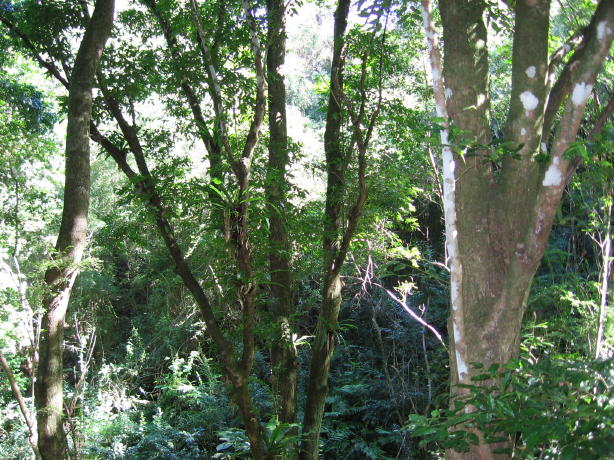Botanical name Guioa semiglauca
A common name Guioa
Seedling
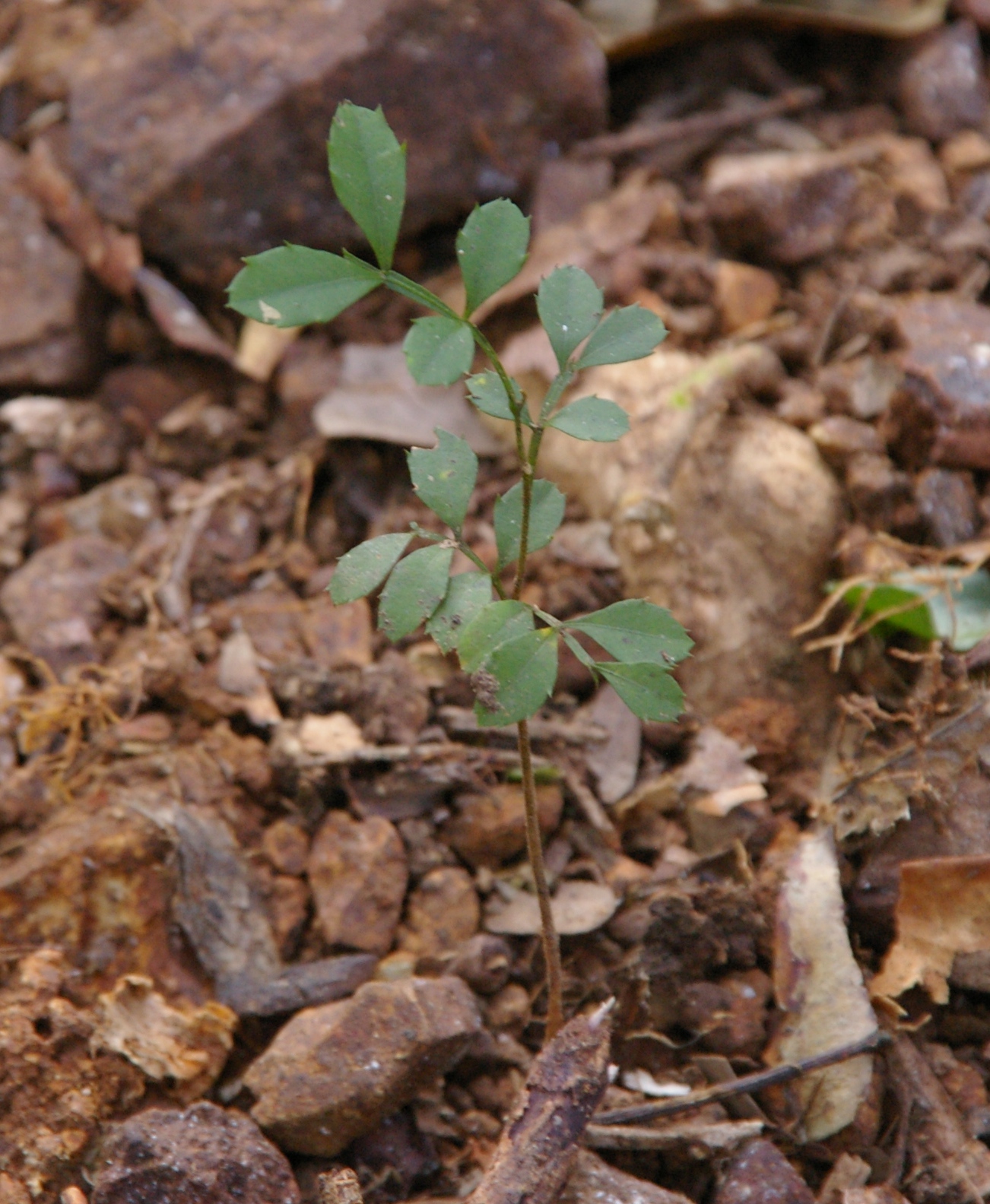 Guioa
semiglauca seedlings go through a few leaf forms as they mature, this
is the first of them. This little seedling is 10cm
tall.
Guioa
semiglauca seedlings go through a few leaf forms as they mature, this
is the first of them. This little seedling is 10cm
tall.Notice the leaves are not entire however the spines are so small you need to be careful not to mistake the leaves for Privett leaves when weeding.
An extra-ordinarily tasty snack for the local herbivores. This one has been very recently found inside a mass of Small Leaf Privett seedlings.
The gravel is quite deep here, this is near the outer edge of a debris field from the demise of a very large tree some time ago.
Given the size and location of the terrace on the hill side I suspect this could be the former location of a Toona ciliata. The inhabitant could have been anything, it is just that there is absolutely nothing left of this tree, even trees that have been burned out leave somehing behind, fallen trees leave the root mass or bits of it somewhere, this lack of debris is really unusual and characteristic of the removal roots and all of Red Cedars. The practice used to be dig around the roots, lots of valuable timber there, and pull the whole tree out with a block and tackle. In the 1880s here they used the Bullock team for that. There is one other hill side location on Sassfras just like this. There are plenty of other terraces on hill sides that have tree remmants.
The flat area is about 5 metres deep and about 8 metres wide. There is a marked drop off to the surrounding slope below and to one side.
The location supports trees that generally like a bit of moisture, inside and within 2 metres of the edge of the terrace are good specimens of, Doryphora sassafras, Endianda muelleri, two Schizomeria ovata, various ferns, Wilkiea huegeliana, Callistemon salignus etc.
Young plant
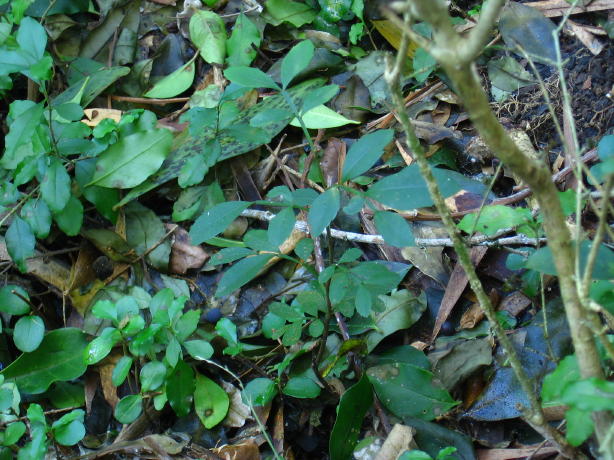 Guioa
seedlings start out with leaves the same size as seedling Small Leaf
Privet, look a the first few leaves and the Privett immediately to the left of them.
Guioa
seedlings start out with leaves the same size as seedling Small Leaf
Privet, look a the first few leaves and the Privett immediately to the left of them. When I am weeding in places like this the only real difference is the tiny points on the leaves, when the Guioa are very young their small leaves are not spotty as those on the right side have become with age.
There is a difference in how shiny the leaves in the picture which is not that apparent in the low light level when looking at the plants. In the photo the colour difference is very obvious but without the benefit of long photographic exposures when you are walking along or weeding you must be ever vigilant for changes in texture and especially pattern. Notice the lowest leaves, on the left of the stem, do not look that different in size to Privett leaves
It's actually dark enough in here for the privett not to get any bigger, they will just sit at this size untill the canopy is disturbed, whereas some of our rainforest species will still grow.
This little plant is getting to a very yummy size for our Swamp wallabies, it will get a cage very soon, or like most at this size the top 3 or all 5 will get munched in one short sitting, it will then shoot again, they just have to be lucky that it doesn't happen everytime they grow a bit.
Growing inside a larger shrub gives them some natural protection.
Juvenile
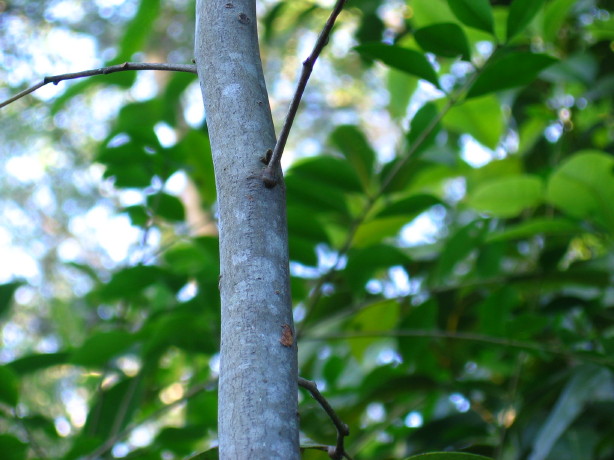 A little bit odd, many of our young Guioa are
like this.
A little bit odd, many of our young Guioa are
like this. Dormant buds at the upper edge of side shoots, called axillary buds, are usually coming out of the joint.
You couldn't really call these axillary buds, anything up to a centimetre away from the axil. This little tree is perhaps 3.5 metres tall.
Perhaps it has something to do with rapid growth, a stretching of tissues.
Reasonably mature
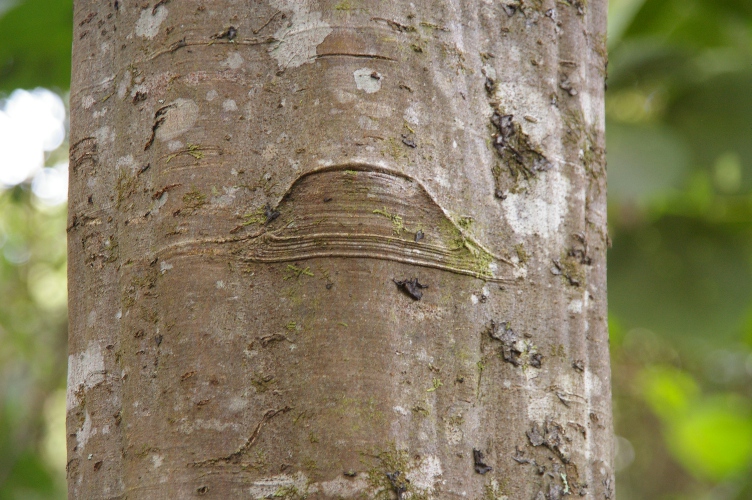 Quite a few years later little branches like like the 3 above can leave scars like this on the trunk.
Quite a few years later little branches like like the 3 above can leave scars like this on the trunk.This is one of the older trees in 2 groves that are close to each other. This grove of 3 are the older generation. The other grove, about 15 metres away of about a dozen is the younger set mostly about 15cm in diameter.
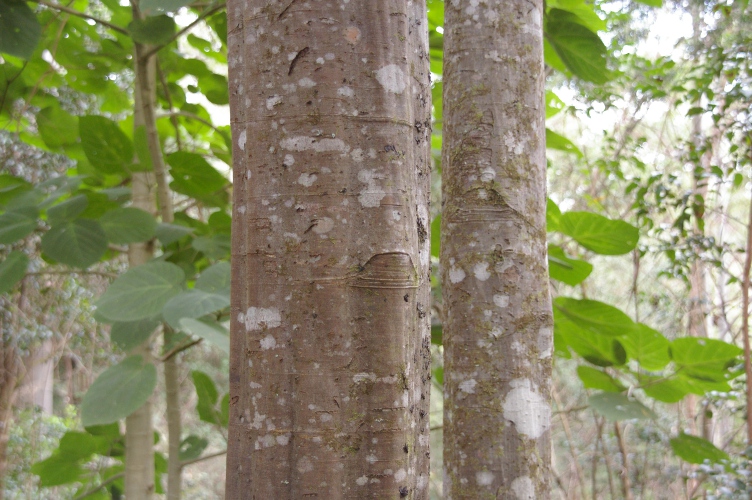 They
all seem to get the scars, they also have horizontal rings, not really
pronounced, nor always all the way around, they are sometimes only
horizontal lines rather than rings but they are there.
They
all seem to get the scars, they also have horizontal rings, not really
pronounced, nor always all the way around, they are sometimes only
horizontal lines rather than rings but they are there.It looks like someone with big claws has been climbing this tree, we do have at least one rather large Lace Monitor, over 2 metres long who visits from time to time.
On the left trunk is some of the fluting, more visible in images lower down the trunk, see below.
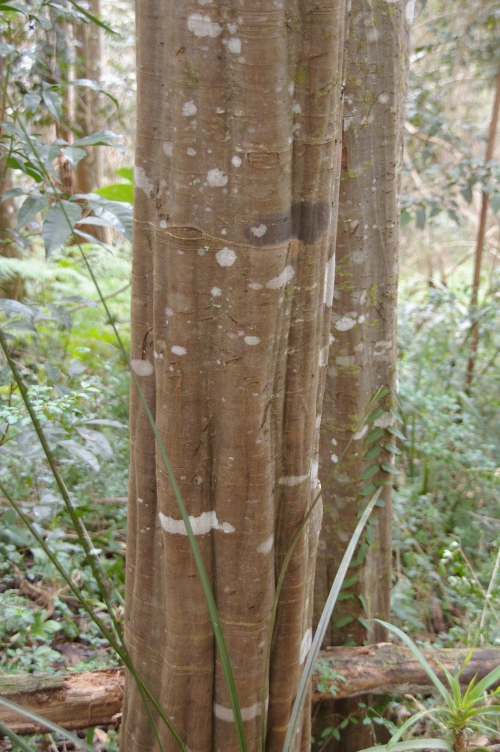 Some fluting in Guioa semiglauca, with a little bit of channeling too.
Some fluting in Guioa semiglauca, with a little bit of channeling too.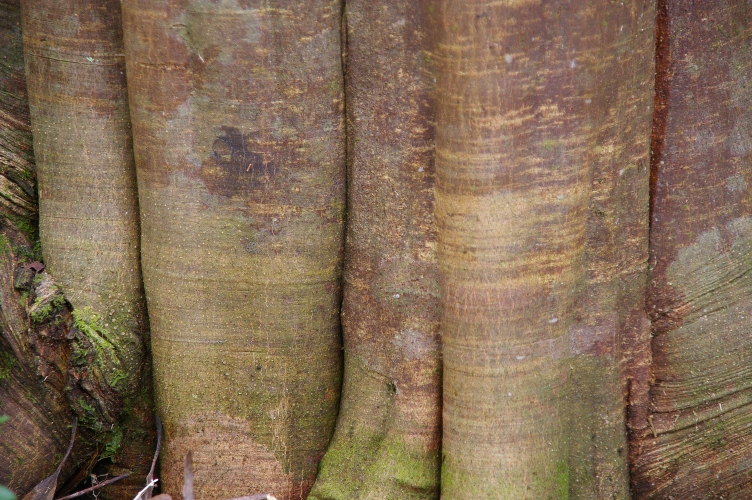 More Guioa semiglauca fluting.
More Guioa semiglauca fluting.Guioa get flanges too, next picture.
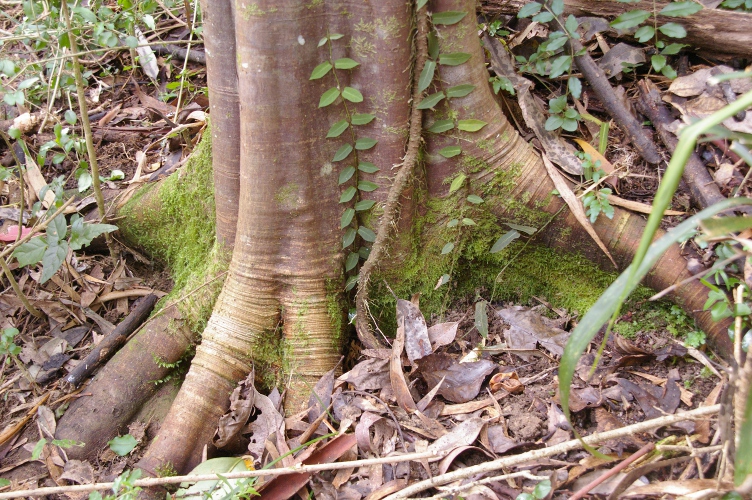 This
smaller specimen has better flanges than the bigger tree. If you
were desperate you could call them small butresses, maybe.
This
smaller specimen has better flanges than the bigger tree. If you
were desperate you could call them small butresses, maybe. The vines starting out are Parsonsia
straminea, they do get somewhat bigger.

